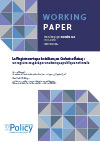Cadastro Único: a Registry Supported by a National Public Bank
Resumo:The Cadastro Único is the main registry for programmes and policies directed at low-income populations in Brazil. It was formally created in 2001, through the consolidation of a number of different cash transfer programmes. The registry intended to unify, in a single database, the individual registries of these programmes, thus minimising data collection efforts for each individual programme. Before the Cadastro Único registries were kept apart even within the same ministry or agency. There was a great variety of databases which basically housed the same data, no quality control and scarce communication between them. Taken separately, each database was relatively small, which did not justify updating them individually, or inclusion and systematisation efforts. Taken together, the policies were not coordinated. As a result, some families received multiple benefits, while similar families which were never included in the databases, never received any cash transfers or services. Today, the Cadastro Único is a unified registry which supports all the main programmes of several ministries of the central government (at least 20) and at subnational levels. (…)
Você também pode baixar em outras línguas:
Esta publicação também pode ser encontrada em um formato condensado e/ou expandido:




